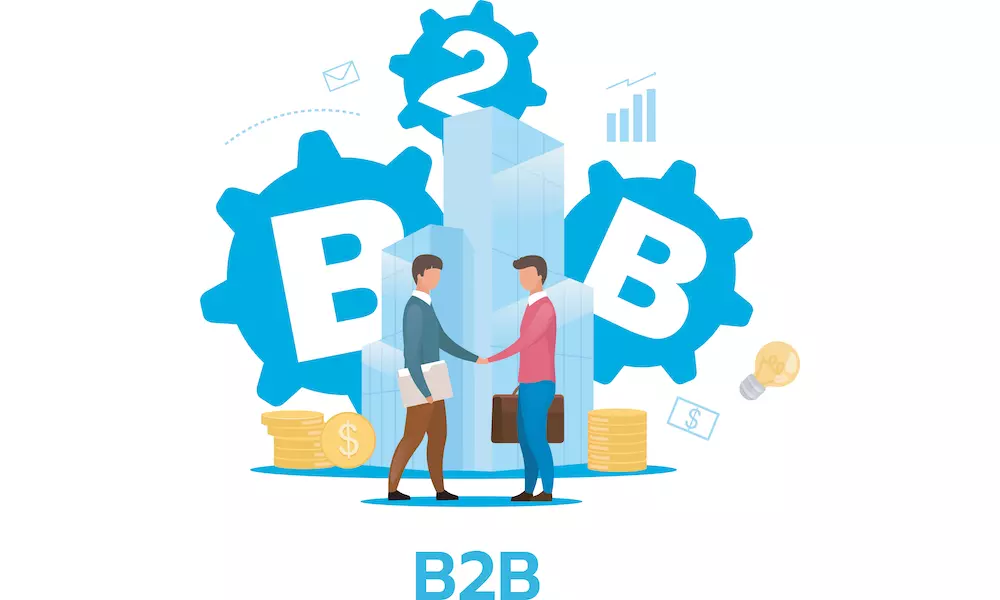Content Marketing
3 Content Tips For B2B Marketing

While content creation can be a challenge for many businesses, B2B businesses seem to have a tough time with content strategy and content creation. Because writing for a business’s decision-makers can be different from writing for a traditional consumer, many businesses writing B2B content struggle.
But with the right planning and preparation done before you sit down to actually create any content, you will find just how easy it can be to create content for a B2B business.
3 Ways To Create B2B Content
To show you just how this can be done, here are three tips for creating content for B2B marketing purposes and ensuring that that content connects with your target market.
1. Get To Know Your Audience With Personas
Just like creating content for B2C businesses, B2B businesses should start by creating personas for the type of customers or clients they want. Not only will this make it easier for you to visualize who you’re creating your content for, but it can also help you narrow down the focus of your content.
Solve problems
According to Neil Patel, an online marketing guru, the buyer personas you create for B2B content should focus primarily on their problems or struggles and how you, as a business, will address those issues.
Once you have this information nailed down, it will be much easier to develop content ideas that will help you fulfill both variables. For example, you can create content addressing the problems that your personas face and how using something like your products or services can show major improvement for their organization.
Clearly articulate how your product or service solves your B2B customers’ problems or fulfills their needs. Focus on your unique value and how it aligns with their business objectives.
Research and analyze customer data
To help create personas, research and analyze your target B2B audience thoroughly. Understand their industry, pain points, goals, and decision-making process. To create buyer personas representing different segments within your audience, consider your existing customers’ benchmarks.
Review the existing customer data and reach out to your customers to collect what you need to build your ideal buyer personas.
2. Browse Online For New Topics And Ideas
Another way you can find great fodder for content ideas, according to Dan Shewan, a contributor to WordStream.com, is to see what people are talking about online.By tapping into current hot topics in your industry, you may find that your content has a further reach due to people being interested in consuming all they can about this issue or idea.
To best do this, you must first know where your target market spends their time online. Once you can find them, getting involved in whatever online communities they’re in can be constructive so you can see what trending topics are being discussed. What you’re doing here is keeping up with conversations.
With this information in hand, you can create content for your target personas relevant to you and your business and timely in that it addresses current concerns that people within your industry are dealing with.
Personalize your content based on the recipient’s industry, role, challenges, etc. This can be done through targeted email campaigns, personalized landing pages, and relevant content suggestions.
3. Write Content That Adds Value
If you’ve been creating content for quite a while, you might feel like you’ve completely maxed yourself out on new ideas. And while this might be partially true, there are always ways to look at things differently or come at an idea from a new angle to help you create an entirely new piece of content.
To help you with this, Honey Singh, a contributor to Entrepreneur.com, recommends that you try to find a balance between posting content on a regular schedule that will help your content marketing and SEO efforts with only posting content that you feel adds real value. If this means posting fewer pieces of content, then so be it.
Educate
However, keep in mind that it’s important to remember that all the content you create for your target demographics should add some kind of value for them. B2B customers often appreciate content that educates them about industry trends, best practices, and emerging technologies. Create whitepapers, ebooks, webinars, and guides that showcase your expertise and provide valuable insights. Use AI writers to assist you with your content.
Every content should have a clear and relevant CTA that guides the reader to the next step in their journey, whether downloading an ebook, requesting a demo, or contacting your sales team.
Use Evidence
B2B customers are more likely to be swayed by data, statistics, and real-world evidence. To support your claims, incorporate case studies, success stories, customer testimonials, and industry benchmarks.
Track the performance of your B2B content using relevant metrics like engagement rates, conversion rates, and lead generation. Analyze the data to identify what’s working and needs improvement, then optimize your content strategy accordingly.
Remember that B2B customers are typically more rational and focused on ROI than B2C customers. Your marketing content should build trust, demonstrate expertise, and provide concrete value to help them make informed business decisions.









